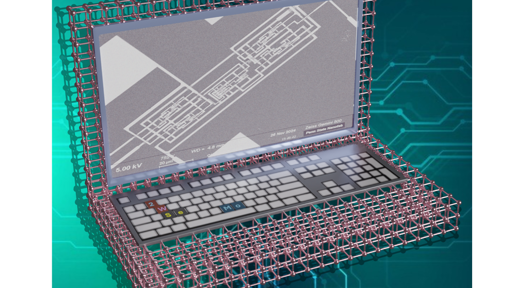Perovskite-based image sensors promise higher sensitivity and resolution than silicon
-
I used to work on hybrid perovskite for solar cells, during my PhD, a few years ago. The problem with theses materials was their short lifetime (some thousands of hours of sun exposition) and chemical instability, which made them unsuitable for "real life" uses, back then (but suitable to get high impact-factor papers...). Is that still a problem?
There have been some improvements but their poor stability is still the biggest problem yeah
-
I used to work on hybrid perovskite for solar cells, during my PhD, a few years ago. The problem with theses materials was their short lifetime (some thousands of hours of sun exposition) and chemical instability, which made them unsuitable for "real life" uses, back then (but suitable to get high impact-factor papers...). Is that still a problem?
I often see developement in that area. Mostly from this channel. Maybe that impacts it's other uses. https://youtu.be/Lglick8bCPc
-
If it's a moving mirror camera* and it's used to take stills it's probably fine, as the sensor is only exposed for a fraction of a second per image.
If you want to film with it or put it in a phone, where it's exposed all the time, it would certainly not be enough.* I have no clue what they are called in english
-
If it's a moving mirror camera* and it's used to take stills it's probably fine, as the sensor is only exposed for a fraction of a second per image.
If you want to film with it or put it in a phone, where it's exposed all the time, it would certainly not be enough.* I have no clue what they are called in english
Digital single-lens reflex, aka DSLR if that's what you mean by moving mirror
-
I used to work on hybrid perovskite for solar cells, during my PhD, a few years ago. The problem with theses materials was their short lifetime (some thousands of hours of sun exposition) and chemical instability, which made them unsuitable for "real life" uses, back then (but suitable to get high impact-factor papers...). Is that still a problem?
I've heard there's been some real breakthroughs in perovskite for solar cells in just the last few years. As you said, chemical instability is supposed to be their primary weakness, but my understanding is that progress has been made in finding the perfect chemical makeup for the "sandwiching" materials between layers of perovskite. I'm pretty sure that "perfect" chemical makeup is the proprietary trade secret variety, so I don't really know much more about it.
And admittedly, I've never been in the field of materials science, so you're much more of an expert in this area. But I've been following a lot of green energy news, and I know promising progress is actively being made on perovskite.
-
I had just watched a video about they need lead as well? Is that true?
I mean, lead is a very common element and can have many legitimate uses. If we're talking about using some amount of lead in a camera sensor, do understand how tiny camera sensors are. This is likely a very insignificant amount of lead. And it will be fused into this sensor, it's not likely to ever leave the confines of the component's plastic casing, behind a lens, with a phone. That's very different from say, mixing it into gasoline and burning it.
-
I've heard there's been some real breakthroughs in perovskite for solar cells in just the last few years. As you said, chemical instability is supposed to be their primary weakness, but my understanding is that progress has been made in finding the perfect chemical makeup for the "sandwiching" materials between layers of perovskite. I'm pretty sure that "perfect" chemical makeup is the proprietary trade secret variety, so I don't really know much more about it.
And admittedly, I've never been in the field of materials science, so you're much more of an expert in this area. But I've been following a lot of green energy news, and I know promising progress is actively being made on perovskite.
Thanks. I have to admit I haven't worked on perovskite since then, so my knowledge is surely very outdated.
-
I used to work on hybrid perovskite for solar cells, during my PhD, a few years ago. The problem with theses materials was their short lifetime (some thousands of hours of sun exposition) and chemical instability, which made them unsuitable for "real life" uses, back then (but suitable to get high impact-factor papers...). Is that still a problem?
I found this paper that seems so address this question:
https://www.sciencedirect.com/science/article/abs/pii/S0026265X23005428
//
perovskites demonstrate exceptional photodetection abilities characterized by high sensitivity and fast response times, rendering them ideal for the development of optical sensors for medical diagnostics and environmental monitoring. Additionally, they hold promise in gas sensing applications, detecting specific gases with high sensitivity and opening up a wide range of potential applications in industrial process control and environmental monitoring. Although perovskite materials have gained attention due to their unique properties, their stability in the presence of moisture or oxygen remains a significant challenge and is an active area of research.
//
this study provides a comprehensive evaluation of recent applications of perovskite materials-based sensors. Specifically, the focus is on chemiresistive gas sensors based on perovskite oxides and fluorescence/photoelectrochemical sensors based on halide perovskitesThis is actually a really good paper, but i'm skimming it to find the references to the stability of peroskite...but i'm not good at doing this on a mobile device.
-
If it's a moving mirror camera* and it's used to take stills it's probably fine, as the sensor is only exposed for a fraction of a second per image.
If you want to film with it or put it in a phone, where it's exposed all the time, it would certainly not be enough.* I have no clue what they are called in english
If it's a moving mirror camera* and it's used to take stills it's probably fine, as the sensor is only exposed for a fraction of a second per image.
You can say goodbye to live view then
-
If it's a moving mirror camera* and it's used to take stills it's probably fine, as the sensor is only exposed for a fraction of a second per image.
You can say goodbye to live view then
No, the mirror reflects to the view finder untill you press the shutter, then it moves thr mirror to expose the photo sensor and then back.
-
If it's a moving mirror camera* and it's used to take stills it's probably fine, as the sensor is only exposed for a fraction of a second per image.
If you want to film with it or put it in a phone, where it's exposed all the time, it would certainly not be enough.* I have no clue what they are called in english
In English they're called reflex cameras. No one makes them now.
-
No, the mirror reflects to the view finder untill you press the shutter, then it moves thr mirror to expose the photo sensor and then back.
I mean no more live view via the screen
-
Mastodon: New Terms of Service IP clause cannot be terminated or revoked, not even by deleting content
Technology 1
1
-
-
-
-
-
-
Trump says a 25% tariff "must be paid by Apple" on iPhones not made in the US, says he told Tim Cook long ago that iPhones sold in the US must be made in the US
Technology 2
2
-
FBI opens inquiry into 764, online group that sexually exploits and encourages minors to self-harm
Technology 1
1


